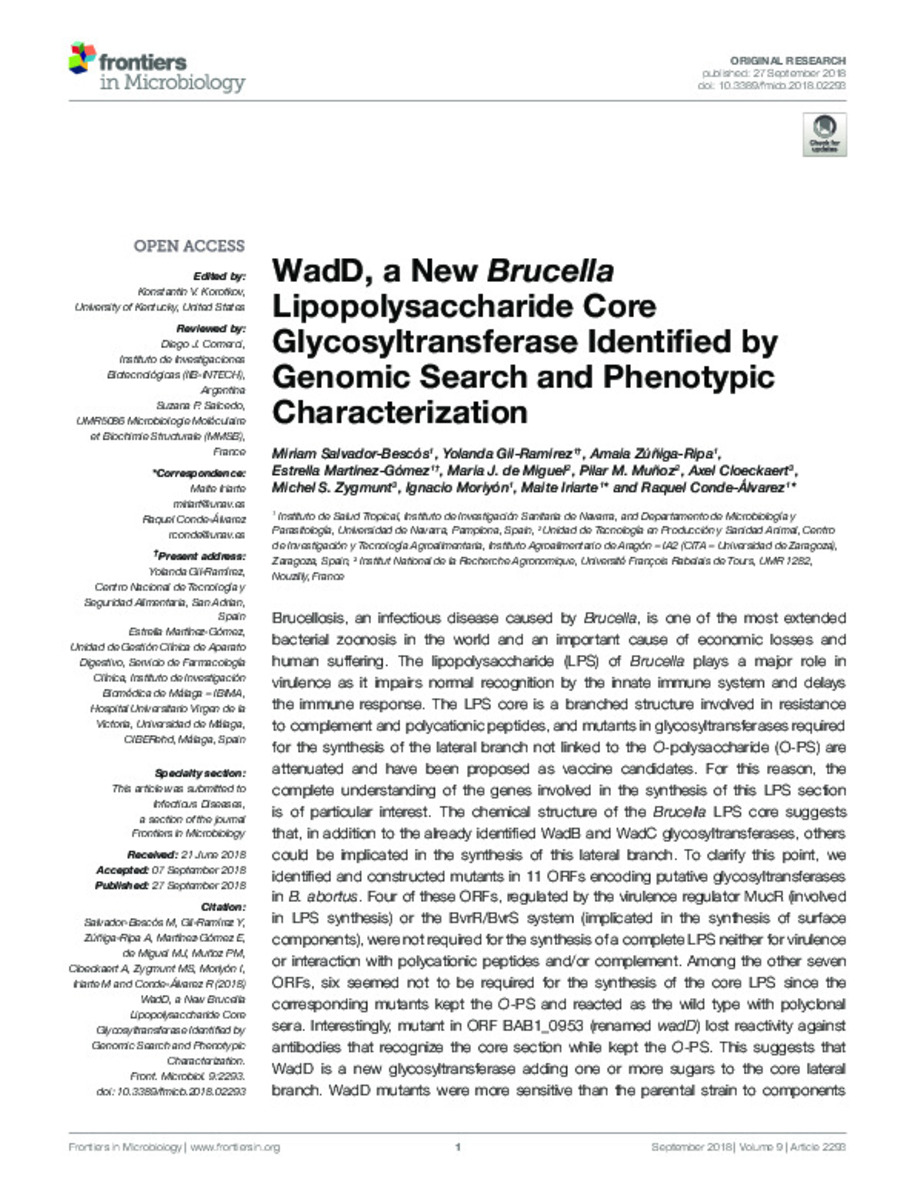WadD, a New Brucella Lipopolysaccharide Core Glycosyltransferase Identified by Genomic Search and Phenotypic Characterization
Keywords:
Brucella
Bacterial pathogenesis
Brucellosis
Glycosyltransferase
Lipopolysaccharide (LPS)
Vaccine development
Virulence factor
Note:
This
is an open-access article distributed under the terms of the Creative Commons
Attribution License (CC BY). The use, distribution or reproduction in other forums
is permitted, provided the original author(s) and the copyright owner(s) are credited
and that the original publication in this journal is cited, in accordance with accepted
academic practice. No use, distribution or reproduction is permitted which does not
comply with these terms.
Citation:
Salvador-Bescós, M. (Miriam); Gil-Ramirez, Y. (Yolanda); Zuñiga-Ripa, A. (Amaia); et al. "WadD, a New Brucella Lipopolysaccharide Core Glycosyltransferase Identified by Genomic Search and Phenotypic Characterization". FRONTIERS IN MICROBIOLOGY. 9 (2293), 2018,
Statistics and impact
0 citas en

Items in Dadun are protected by copyright, with all rights reserved, unless otherwise indicated.








